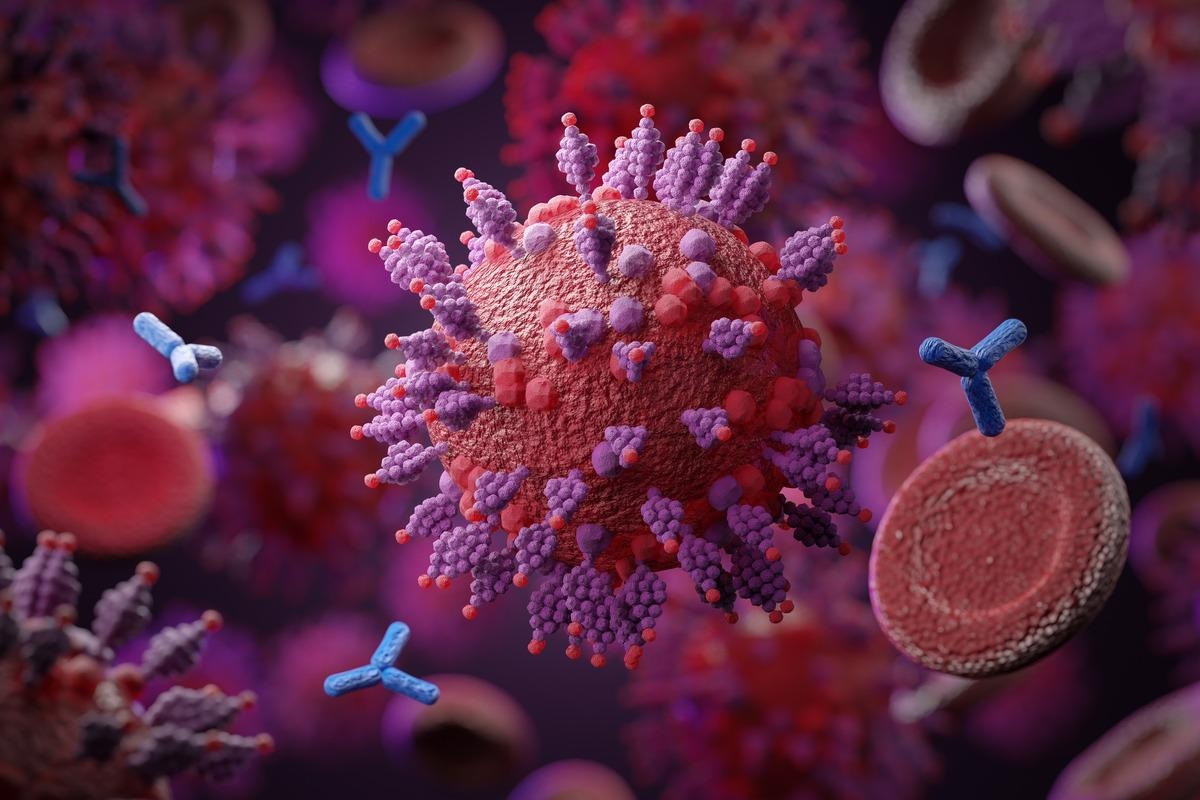In a recent study published in Nature Medicine, researchers compared coronavirus disease 2019 (COVID-19) severity outcomes among individuals infected with the severe acute respiratory syndrome coronavirus 2 (SARS-CoV-2) Omicron and Delta variants. They also explored differences in risks of severe COVID-19 outcomes among individuals infected with Omicron BA.1/BA.1.1 and BA.2 subvariants in South California.

The unprecedented increase in COVID-19 cases has led to substantial morbidity and mortality across the globe. An evaluation of the variant-specific differences in COVID-19 severity by vaccination and COVID-19 history would inform decision-making and improve healthcare management.
About the study
In the present study, researchers compared the severity of Delta and Omicron infections and Omicron BA.1 and BA.2 subvariant infections in South California.
Omicron infections were assessed between December 15, 2021, and January 17, 2022, and Omicron BA.2 subvariant infections were assessed between February 3 and March 17, 2022. Data of reverse transcription-polymerase chain reaction (RT-PCR)-diagnosed COVID-19 cases detected in outpatient settings were obtained from electronic health records (EHRs) of the Kaiser Permanente of Southern California (KPSC) healthcare system.
The causative variant was identified by SARS-CoV-2 spike (S)-gene target failure (SGTF) analysis. Variant-specific risks of five endpoints viz. any hospitalization, symptomatic hospitalization, intensive care unit (ICU) admission, mechanical ventilation requirements, and death per 1000 cases were determined, and differences in the endpoints based on vaccination were evaluated.
Symptomatic hospitalization was described as new hospital admissions within two weeks of new-onset acute respiratory symptoms. Cox regression models were used for the analysis. The adjusted hazard ratios (aHR) and adjusted relative risks (aRR) were calculated with data adjustments for several demographic and clinical variables.
Results
A total of 222,688 Omicron cases, 23,305 Delta cases, 12,756 BA.1 cases, and 1,905 Omicron BA.2 were detected. No significant differences were found in the immune protection against SARS-CoV-2 among BA.1 and BA.2 cases based on vaccine doses, vaccination timing, and COVID-19 history. Likewise, no differences in the severity outcomes, duration of hospital stay, or likelihood of discharge among BA.1 and BA.2 cases.
The cumulative risks of symptomatic hospitalization, any hospitalization, mechanical ventilation requirements, ICU admission, and mortality among Delta cases were 9.7, 10, 0.7, 1.1, and 0.7, respectively. For Omicron cases, the corresponding risks were 3.9, 4.5, 0.1, 0.2, and 0.1, respectively. The aHR estimates for COVID for any hospitalization and symptomatic hospitalization comparing cases with Omicron and Delta infections were 0.6 and 0.6, respectively.
For ICU admissions, mechanical ventilation requirements, and deaths, the aHRs comparing Omicron and Delta cases over 60 days after detection in outpatient settings were 0.5, 0.36, and 0.2, respectively. The estimates were similar after the inclusion of cases diagnosed at or following the hospitalization date and after limiting the analyses to cases that were asymptomatic when testing was performed in outpatient settings, among which Omicron infections were associated with a lesser risk of symptom development than Delta infections (aHR=0.9).
The aHR estimates were also similar when including only cases with complete information on covariates measured or only those subscribed to KPSC healthcare plans ≥12 months before the date of their COVID-19 diagnoses. The aRRs of symptomatic hospitalization, any hospitalization, mechanical ventilation requirements, ICU admissions, and deaths were 0.6, 0.6, 0.4, 0.5, and 0.2, respectively.
An equal number of vaccinations were associated with larger reductions in the risks of COVID-19 severity outcomes among Delta cases than in Omicron cases. For two doses and zero vaccine doses, aHRs for Delta and Omicron cases were 0.2 and 0.5, respectively, and for three doses vs. zero vaccine doses, the corresponding aHRs were 0.1 and 0.4, respectively.
Among unvaccinated cases, the aHRs for Omicron versus Delta infections for any hospitalization, symptomatic hospitalization, ICU admission, mechanical ventilation requirements, and deaths were 0.4, 0.4, 0.3, 0.2, and 0.1, respectively. Variant-specific risks of any hospitalization or symptomatic hospitalization were not detected among individuals with ≥3 mRNA vaccinations and were attenuated among doubly vaccinated individuals.
No differences were observed in the risk of mechanical ventilation requirements and ICU admissions among vaccinated individuals infected with Delta or Omicron. However, among them, Omicron cases had a lesser mortality risk than Delta infections (aHR=0.3). Among hospitalized Delta cases, the proportions of cases with hospital stay ≤5 days, ≤10 days, and ≤15 days were 66%, 85%, and 89%, respectively, compared to 85%, 91%, and 92% among hospitalized Omicron cases. About 74% and 86% of hospitalized Delta and Omicron cases, respectively, were discharged within ≤30 days. The 30-day likelihood of mortality or discharge to a hospice following hospitalization was 1% and 0.4% for Omicron infections, respectively.
Conclusion
Overall, the study findings showed that Omicron infections were associated with lower COVID-19 severity than Delta infections in South California, and the differences were most prominent among unvaccinated individuals. In contrast, Omicron BA.1- and BA.2-infected individuals were equally prone to severe COVID-19.
- Lewnard, J. et al. (2022) "Clinical outcomes associated with SARS-CoV-2 Omicron (B.1.1.529) variant and BA.1/BA.1.1 or BA.2 subvariant infection in southern California", Nature Medicine. doi: 10.1038/s41591-022-01887-z. https://www.nature.com/articles/s41591-022-01887-z
Posted in: Medical Science News | Medical Research News | Disease/Infection News
Tags: Coronavirus, Coronavirus Disease COVID-19, covid-19, Gene, Healthcare, Hospice, Hospital, Intensive Care, Medicine, Mortality, Omicron, Polymerase, Polymerase Chain Reaction, Respiratory, SARS, SARS-CoV-2, Severe Acute Respiratory, Severe Acute Respiratory Syndrome, Syndrome, Transcription, Vaccine

Written by
Pooja Toshniwal Paharia
Dr. based clinical-radiological diagnosis and management of oral lesions and conditions and associated maxillofacial disorders.
Source: Read Full Article